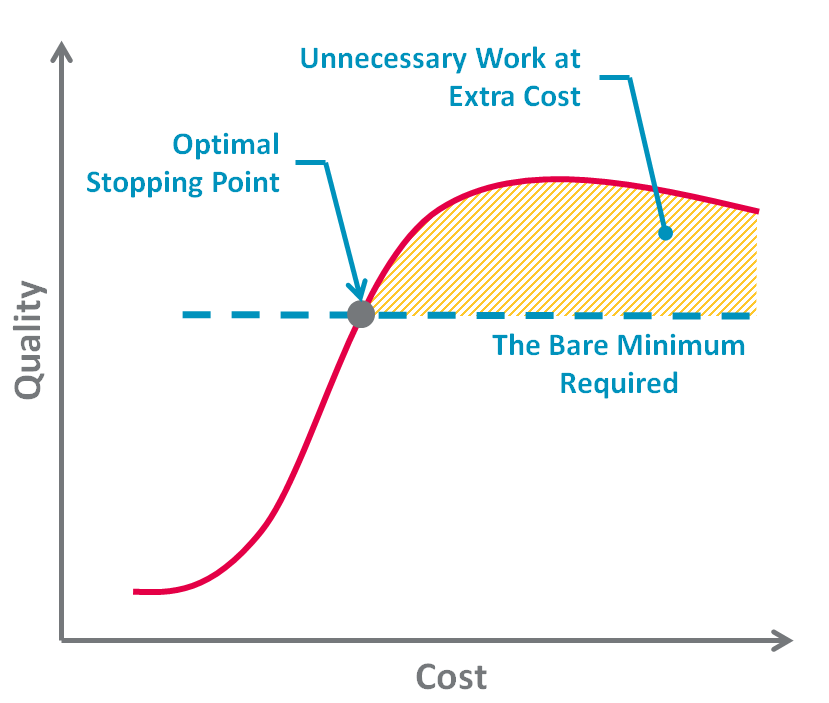 The bare minimum: “the smallest possible quantity or the least fulfilling, but still adequate, condition that is required, acceptable, or suitable for some purpose.” (Per Wiktionary)
The bare minimum: “the smallest possible quantity or the least fulfilling, but still adequate, condition that is required, acceptable, or suitable for some purpose.” (Per Wiktionary)
It sounds pretty bleak, doesn’t it? It conjures up images of the slacker doing just enough to get by. It carries with it a feeling of laziness and sloth. The bare minimum is not something you want to be associated with.
But I contend that the bare minimum gets a bad rap, and that in fact we could use a bit more of the bare minimum when it comes to transportation projects. I know it is blasphemy, and seeing as I work in a profession that sells its services to clients, I am a little surprised that the editors of our company blog actually agreed to post such a thought. That must mean that in some way I was able to sway them by my defense of the bare minimum, and with luck, maybe I can persuade you too...at least a little.
Take a second to read the definition again. The negative impression of the bare minimum comes from the first half of the definition, but the second half is underappreciated. No matter how little was done, the fact remains that it was enough. The job was done, the goals were met or the mission was accomplished, and to top it all off, no time, funds or energy were wasted on jobs that didn’t need done, goals that weren’t set, or tasks that weren’t part of the mission. The key then becomes properly defining the job, or selecting the right goals or mission.

This is such a critical issue with the transportation situation we find ourselves in. There is aging infrastructure that needs to be maintained or replaced, there is new growth that creates new infrastructure demands, and funding is becoming increasingly difficult to come by. When your long sought after project finally gets funded, there is a temptation to stretch the scope as wide open as you can. After all, it took so long to get funding for your top priority that who knows when the money will free up for your second priority.
While this temptation is understandable, we must keep in mind that with public projects there is no “my project” or “their project”, and there is no “my funding” or “their funding”. All projects are our projects and we have not yet found some mythical others to fund our projects. Ultimately we all benefit from the transportation projects and unfortunately we all have to pay for them. And that is where we can all appreciate the bare minimum.
When we identify a problem that needs fixed, we ought to do the bare minimum to fix it, while spending the bare minimum. This is the goal of the Washington State Department of Transportation’s (WSDOT’s) Least Cost Planning approach (http://www.wsdot.wa.gov/Projects/PracticalDesign/lcp.htm). According to WSDOT, “least cost planning is an approach to making planning decisions that considers a variety of conceptual solutions to achieve the desired system performance targets for the least cost.” Finding the most efficient method of fixing a problem leaves more of our money to be used on our other projects.
Unfortunately for the foreseeable future there will be more transportation problems that need solutions than there will be funding to address the problems. We must therefore use our money wisely by doing the least possible while still solving the problem. By doing the bare minimum we can stretch our transportation dollars further and make the more effective improvements sooner.
And while we’re at it, the bare minimum could really use rebranding. Maybe Precise Solutions or Right-Sized Projects? What do you think? Please leave a comment below and let me know.
Photo credit:© Can Stock Photo Inc. / mmarcol

